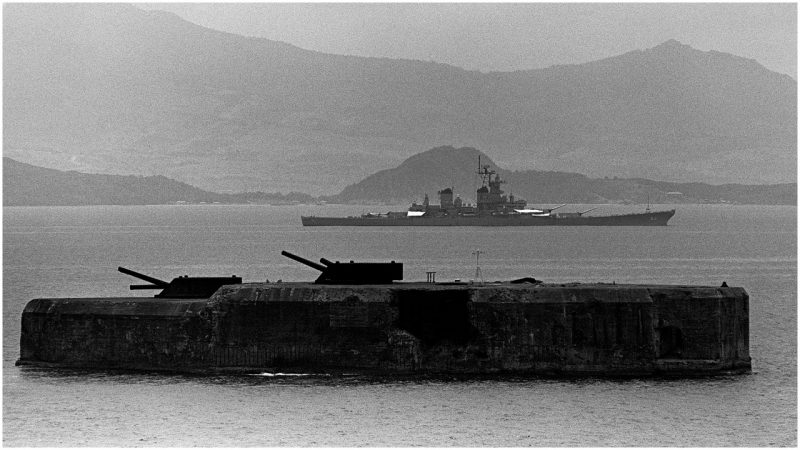The United States once leveled an island in the Philippines to build a “concrete battleship” called Fort Drum. Captured by the Japanese during WWII, the fort was retaken by the Americans when they poured gasoline inside and set it aflame, killing every Japanese soldier inside it.
Prelude
The small island of El Fraile is situated at the mouth of Manila Bay in the Philippines. The bay is the seaward entrance to Manila, the capital city of the Philippines. It was and still is of great commercial and strategic importance.
The Spanish rulers of the Philippines placed some artillery on the Island of El Fraile towards the end of the 19th century. These were for sea defense and in anticipation of any upcoming conflict, especially with the United States.
When war did break out with the U.S., El Fraile first saw action in 1898 during the Battle of Manila in the Spanish-American War. Its shore battery fired on attacking American warships, and was subsequently put out of action by a single shell when the USS Raleigh returned fire.
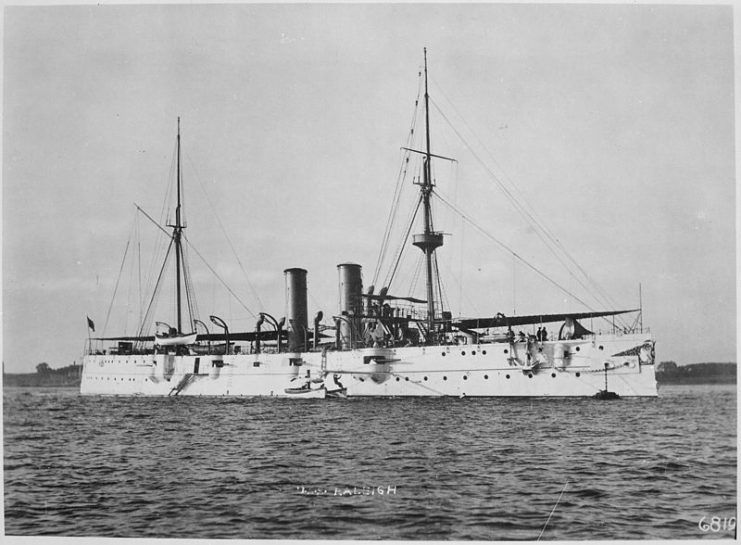
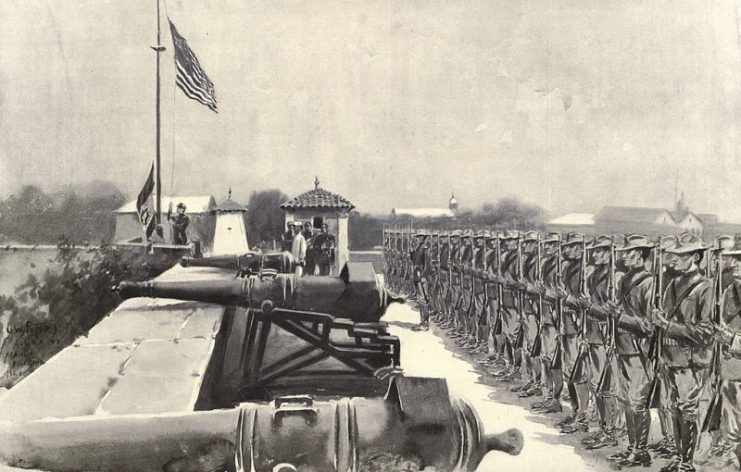
When the U.S. emerged as the victor in the war, it took control of the Philippines and subsequently reinforced the harbor batteries.
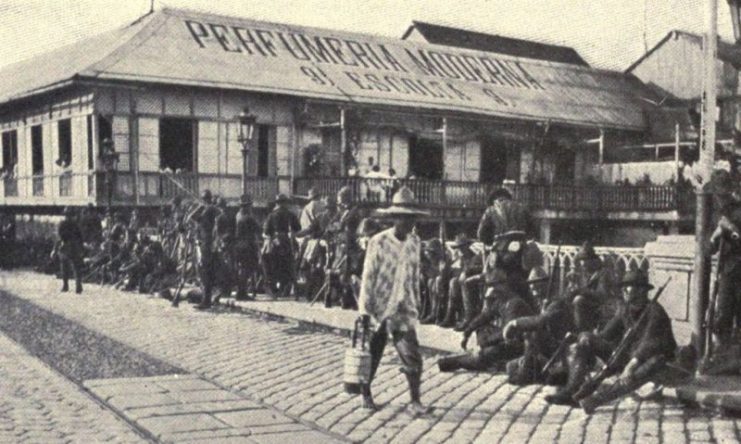
But in 1905 the Taft Board for seacoast fortifications recommended that these batteries needed not just reinforcing, but modernizing too. The board recommended the batteries be fortified because Manila Bay was growing in strategic importance, especially as it was now the home base of the United States Asiatic Fleet.
So between 1905 to 1915, four forts were built at the mouth of the bay at a considerable cost. One of them was built at El Fraile and was renamed Fort Drum in honor of Brigadier General Richard C. Drum. He had been a war hero who served in both the Mexican-American War (1846-48) and the American Civil War (1861-65).
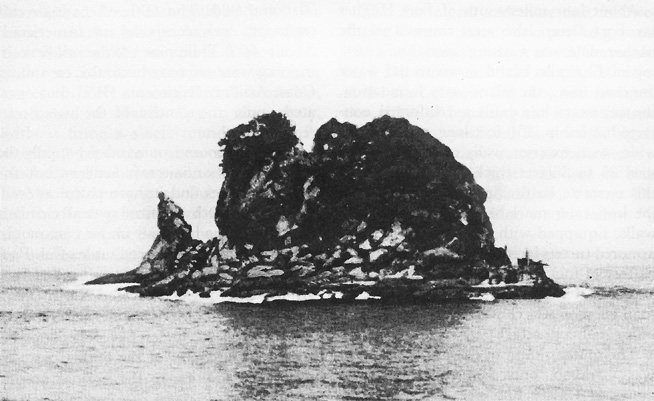
Construction of Fort Drum
El Fraile’s transformation into Fort Drum was dramatic in the extreme. The small island had been mostly a series of tall, rocky outcrops. These were totally leveled and in their place was built a concrete bunker structure shaped like a battleship, no doubt to intimidate and fool any would-be attacker.
Construction started in 1909 and took several years to complete. On completion, it was 350 feet long, 144 feet wide, and towered 40 feet above the sea.
The fort was designed to operate fully independently and had accommodations for 240 men. It was equipped with a mess hall, medical facilities, a range finder tower 60 feet tall, and a comprehensive communication center.
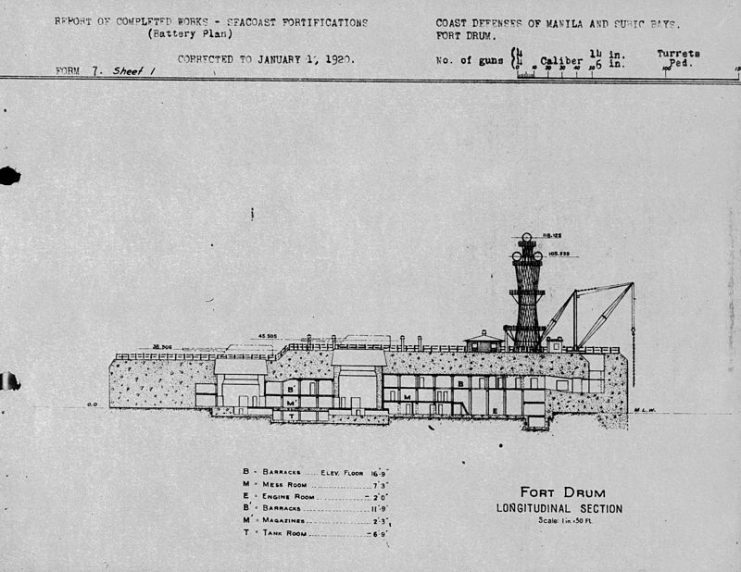
Probably most importantly, it bristled with an impressive arsenal of weaponry. This was dominated by two giant armored turrets, each with 2 x 14 inch (355mm) guns. These guns could match any main armament of any battleship of that period, and the fort’s guns had the ability to fire a shell up to 11 miles (18 km) away. This was further backed up by a pair of 6 inch (152mm) guns on either of the “ship’s” reinforced casements.
And though at the time of construction air warfare was in its infancy, the need was quickly realized to have some kind of aerial defenses on the fort. So towards the end of World War I, two single 3 inch (76mm) anti-aircraft guns were added on top of the structure, along with several large search lights. These AA guns could in theory fire up to an altitude of 5 miles (8 km) into the air.
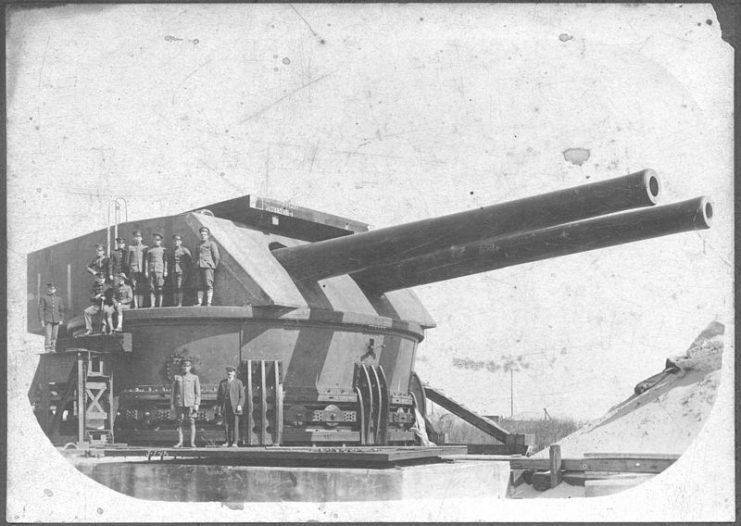
The concrete-steel armored shell of the fortress had exterior walls between 25 to 36 feet (7.6 to 11.0 meters) of thick steel-reinforced concrete. The roof was 20-foot (6 meters) thick steel-reinforced concrete.
This would have made it virtually impregnable to any naval or aerial attack of that period. Even later, by World War II standards, there was little armament in any country in the world capable of breaching the fort’s armored protection. It was truly formidable.
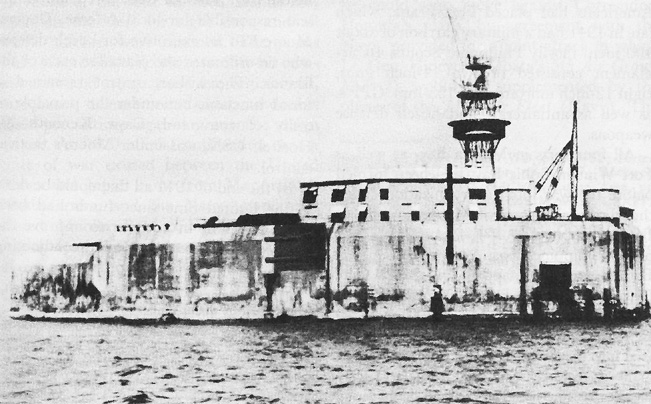
Japanese Siege and Capture
During the inter-war years of the 1920’s and 30’s little was done to upgrade or improve Fort Drum. In some ways there was little need to, as its mere presence was a powerful symbol and an effective deterrent in itself.
But then came World War II and the Americans being dragged into the conflict on December 7, 1941. When the Japanese attacked the U.S. naval base at Pearl Harbor, the U.S. naval assets based at Manila suddenly became much more important.
Just before the U.S. was forced into the war, Fort Drum had been put on a war footing and readied for possible action. It was not long before those measures were needed, as on January 2, 1942, just 4 weeks after Pearl Harbor, the Japanese land forces were near enough to Manila to bombard the fort with heavy artillery.
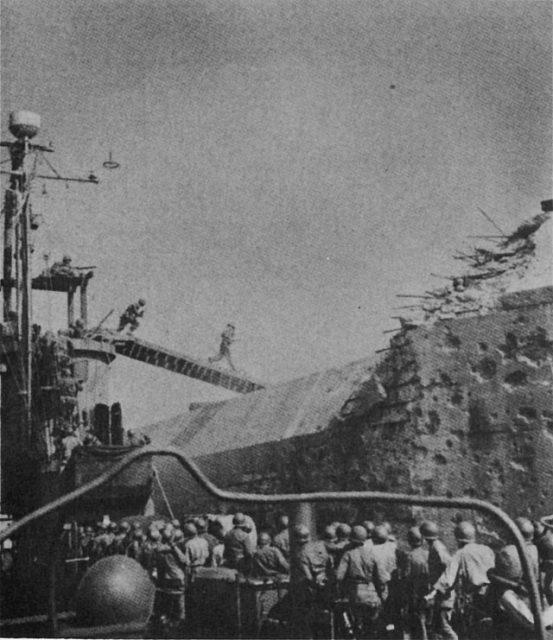
Quickly Manila fell and then the other forts in the area did too, until just Fort Drum remained. As soon as the fort came under siege the soldiers there went on half rations and extra water was stockpiled, stored in empty 14-inch shell casings
Isolated, the fort withstood five months of continuous bombardment. This included attacks from land-based 9.5 inch (240 mm) super heavy howitzers, and from the air by Japanese dive bombers and high attitude bombers.
Despite all this the fort managed to hold out until May 1942. During this time the fort’s defenders managed to inflict damage on several enemy landing craft and suppressed or destroyed many enemy artillery emplacements.
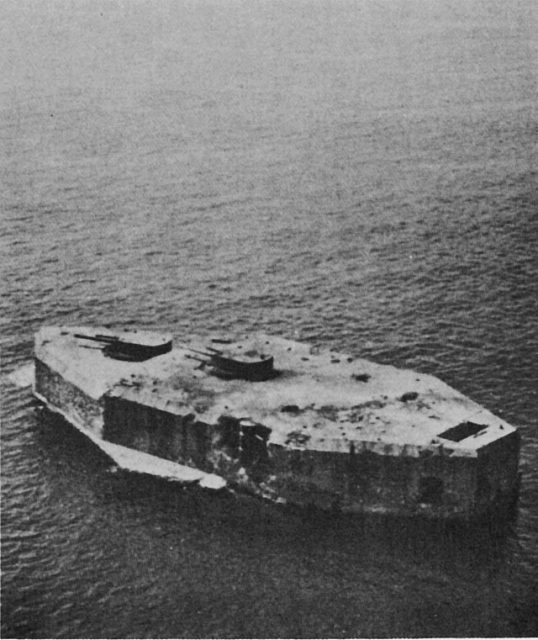
But after all that time, ammunition was running low and their water supply was virtually exhausted. They had nearly used up all the oil that powered the electrical generators, and there was no realistic chance of help from reinforcements. Fort Drum was left with no other option but to surrender.
Fort Drum was the last American unit to fall in the Philippines, and before they surrendered they disabled the fort’s 14 inch guns. The garrison’s survivors were eventually shipped off to prison camps in Japan, and had to wait until the end of the war to be liberated by Allied forces.
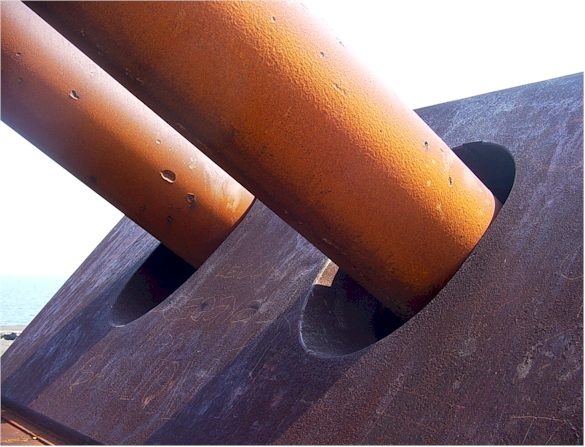
American Recapture
Meanwhile, Manila and Fort Drum endured nearly three years of Japanese occupation. During that time it would seem that the Japanese made no attempt to repair the fort’s main guns.
On October 1944, the Americans started to retake the Philippines. It came to a bloody climax with a particularly brutal and bloody month-long battle when the Americans fought for control of Manila during January 1945. But one place held out, and that was Fort Drum’s Japanese garrison.
Now the Americans were faced with the problem of what to do about Fort Drum, occupied by a fanatical and well stocked Japanese garrison. The Americans were well aware of the almost impregnable defensive capabilities of the fort and knew a conventional attack would be costly and probably ineffective.
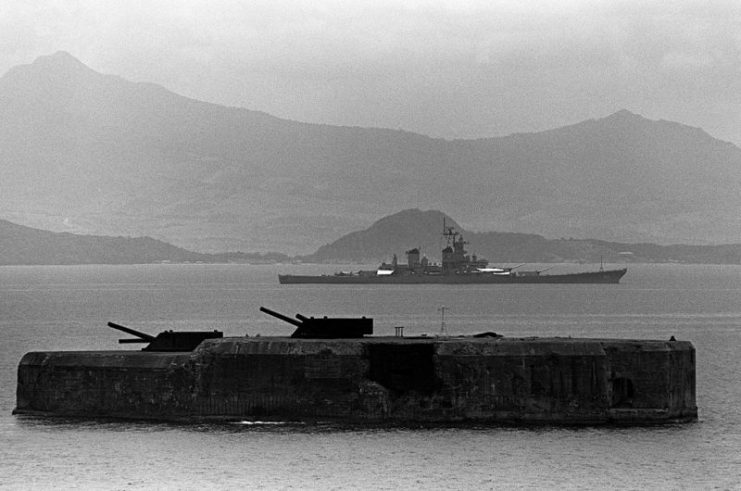
The obvious solution was to lay siege to the island and wait for the Japanese to run out of supplies, much like the Japanese had done to the American garrison back in 1942.
But as the fort’s still operational 6 inch (152mm) guns could easily harass much-needed shipping coming in and out of the harbor, this was not an effective option.
So they took inspiration from a method used to clear the neighboring Fort Hughes a few days earlier. A Japanese force had been stubbornly entrenched in that former American fort as well. Fort Hughes had reinforced concrete walls 20 feet thick, so it had been decided to pump in a special mixture of fuel consisting of two parts diesel oil and one part gasoline and set light to it with tracer bullets.
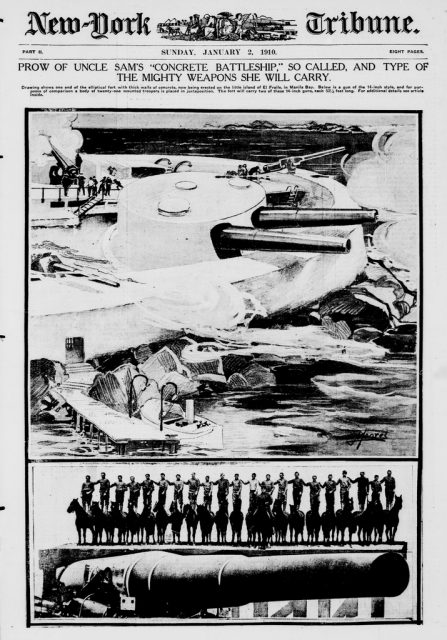
Though gruesome, it proved highly effective—all the resisting Japanese soldiers perished in the ensuing fireball, with no American casualties.
The same method was therefore used at Fort Drum. First there was a heavy aerial and naval bombardment on the fort. Then a Landing Ship Medium, an amphibious assault ship, approached the fort in one of its blind spots. The men aboard used an attached, specially modified bridge to gained access to the deck, or roof, of the fort.
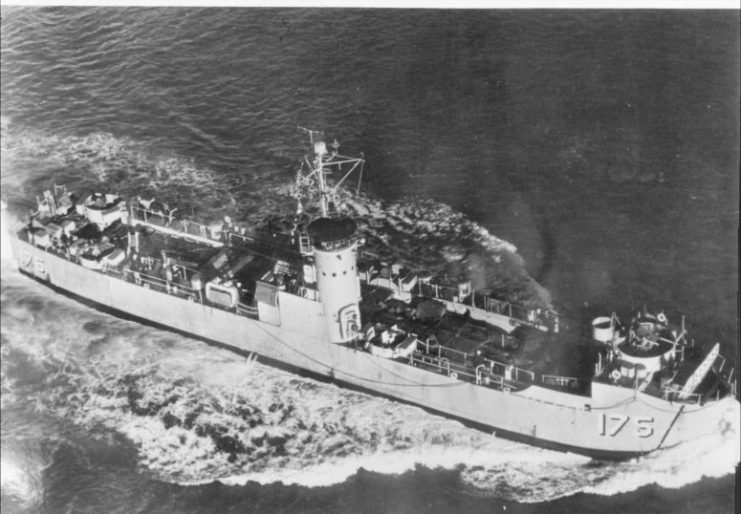
Engineers proceeded to pump a large amount of the diesel/gasoline mix down several of the fort’s ventilation shafts. Then using timed fuses, they set the concoction alight. The landing, carrying out of the mission, and departure took only fifteen minutes.
All the Japanese in the fort were killed and the fire in the fort burned for several days. It was not until five days later that the Americans could enter the fort and confirm there were no survivors.
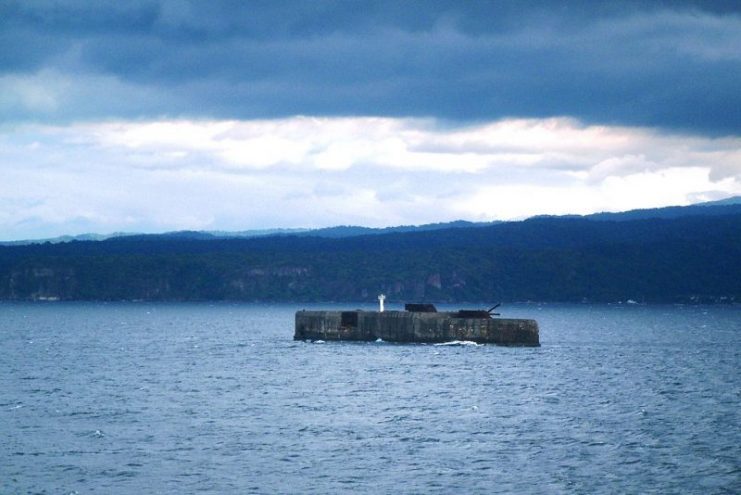
Read another story from us: Resistance Warriors of the Philippines
After the war, no attempt was made to reoccupy the fort by the Philippine military, as seacoast forts now seemed to be an outdated concept. Its massive guns were left to rust and the burned-out interior was never repaired.
Over the years Fort Drum has been the victim of looters illegally salvaging scrap metal from the site, as well as having squatters live there. It is a sad, but inevitable demise for a relic from a long ago era.
